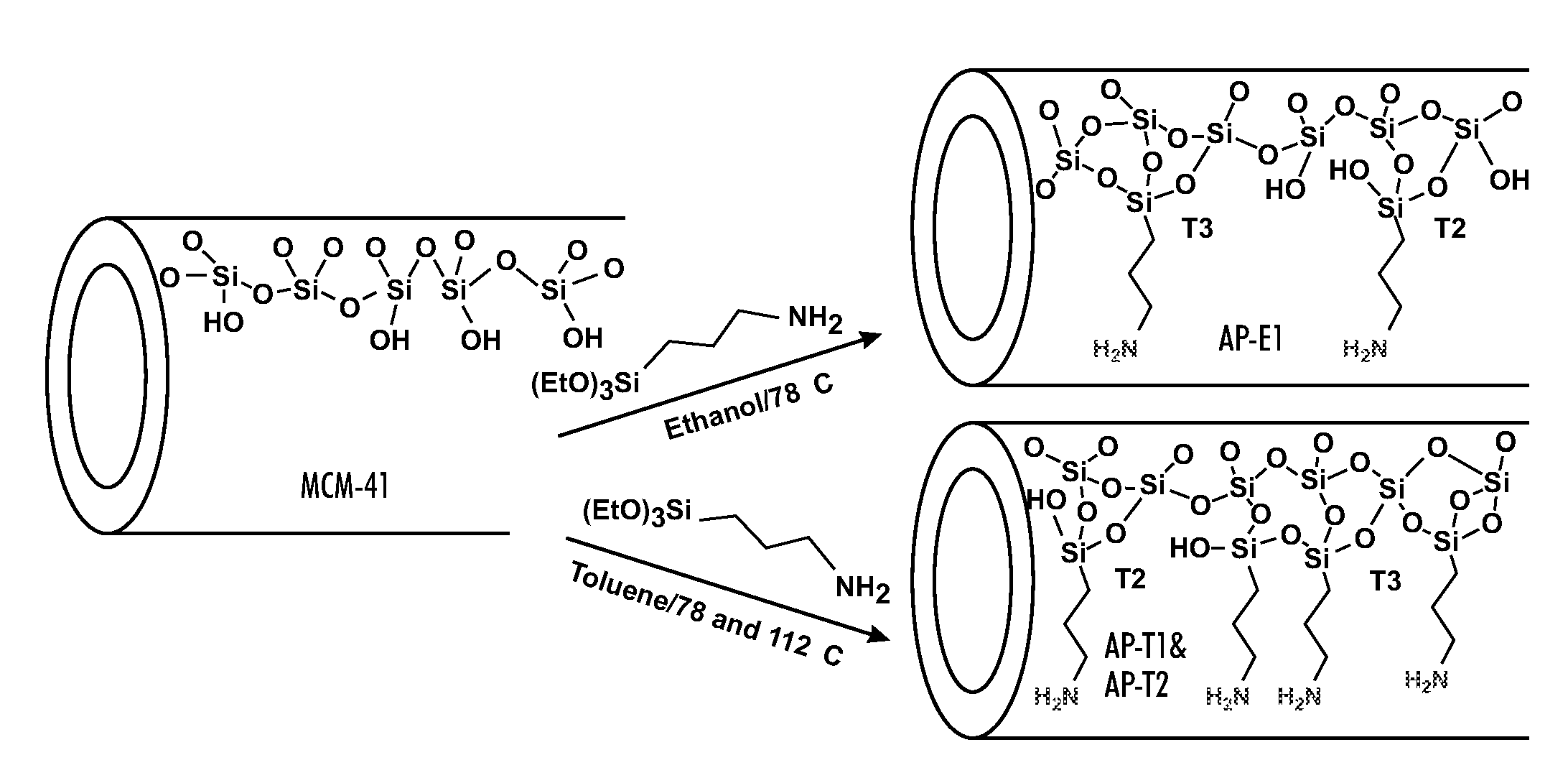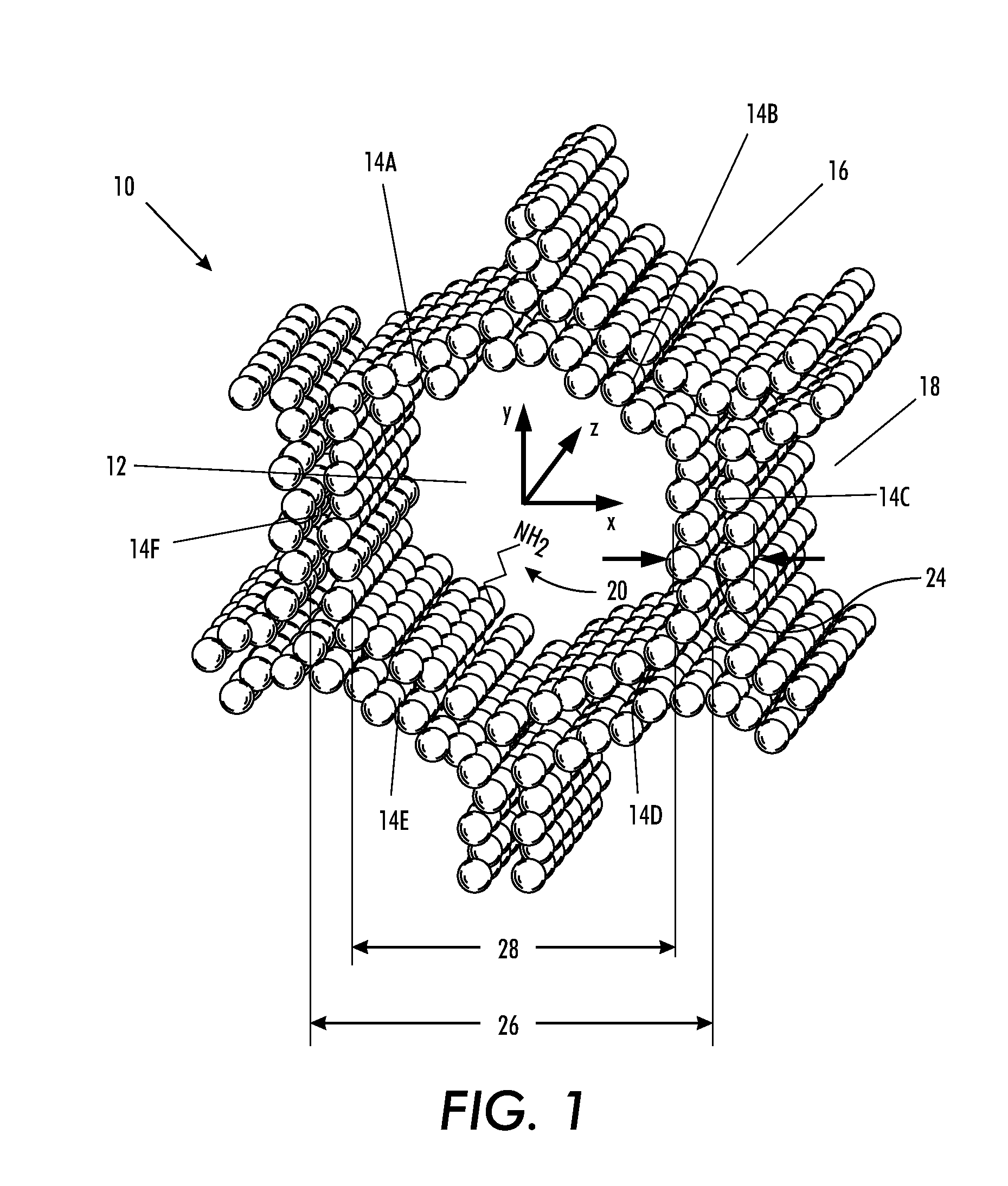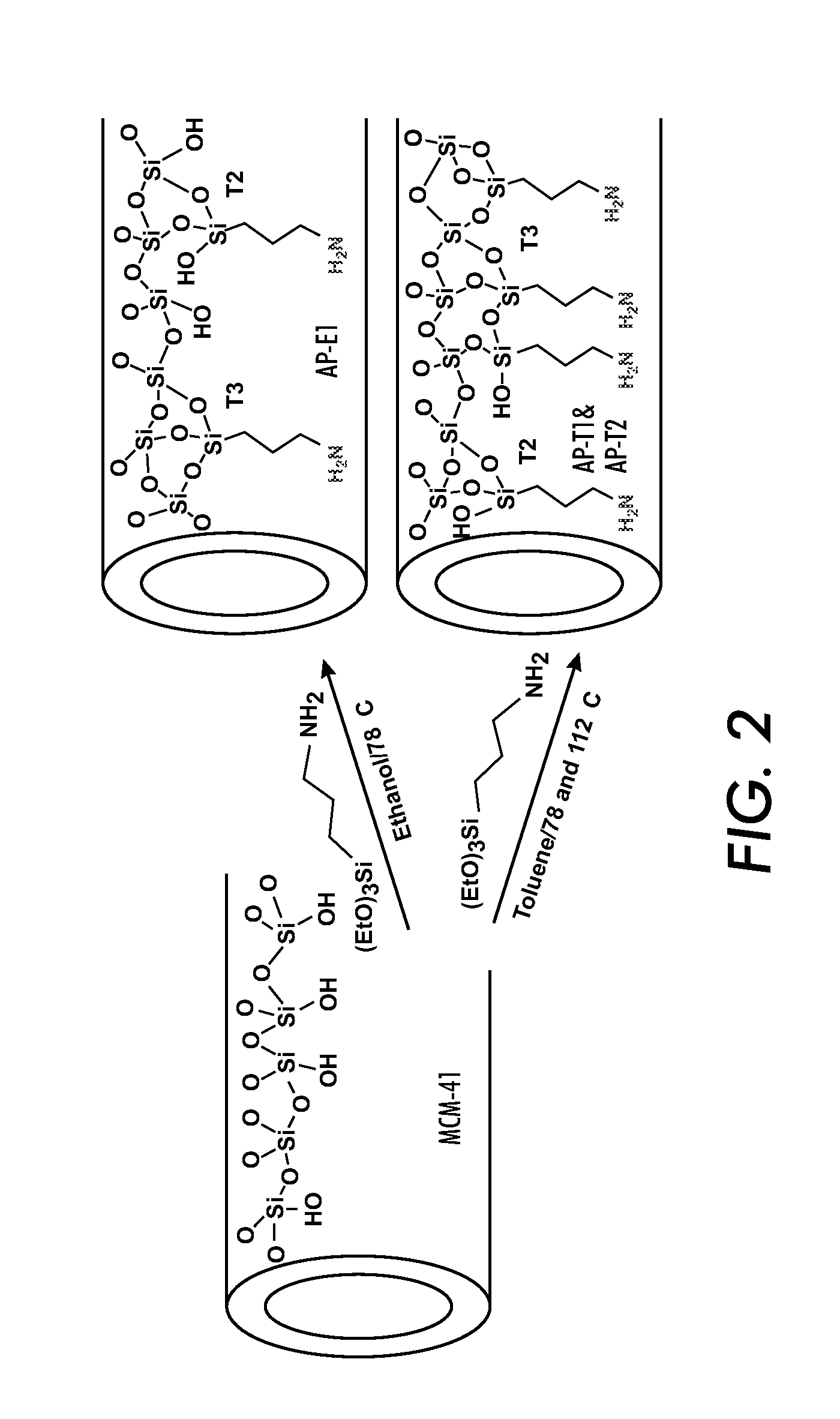Selective and efficient bifunctional and trifunctional nanoporous catalysts and methods of synthesis thereof
a nanoporous catalyst, trifunctional technology, applied in the field of ##ect, can solve the problems of reducing the surface area and pore volume of materials, reducing the efficiency and selectivity of these catalysts, and reducing the number of surface areas and pore volumes of materials, so as to achieve the highest catalytic efficiency, reduce the number of synthetic steps, and control the separation distance between functional groups
- Summary
- Abstract
- Description
- Claims
- Application Information
AI Technical Summary
Benefits of technology
Problems solved by technology
Method used
Image
Examples
Embodiment Construction
[0090]For a general understanding of the present invention, reference is made to the drawings. In the drawings, like reference numerals have been used throughout to designate identical elements. In describing the present invention, a variety of terms are used in the description.
[0091]As used herein, the term “catalyst” is meant to indicate a substance that increases the rate of a chemical reaction while not being consumed in the reaction.
[0092]As used herein, the term “selective,” when used in reference to a catalyst, is meant to indicate the capability of the catalyst to cause the production of specific products by selectively catalyzing a specific reactant or reaction in a mixture of similarly reactive compounds or from competitive reactions. This capability may be the result of the geometry of the catalyst substrate in combination with the species of chemical groups grafted to the substrate and / or their density on the substrate and / or their locations and / or their relative proport...
PUM
| Property | Measurement | Unit |
|---|---|---|
| temperature | aaaaa | aaaaa |
| temperature | aaaaa | aaaaa |
| diameter | aaaaa | aaaaa |
Abstract
Description
Claims
Application Information
 Login to View More
Login to View More - R&D
- Intellectual Property
- Life Sciences
- Materials
- Tech Scout
- Unparalleled Data Quality
- Higher Quality Content
- 60% Fewer Hallucinations
Browse by: Latest US Patents, China's latest patents, Technical Efficacy Thesaurus, Application Domain, Technology Topic, Popular Technical Reports.
© 2025 PatSnap. All rights reserved.Legal|Privacy policy|Modern Slavery Act Transparency Statement|Sitemap|About US| Contact US: help@patsnap.com



